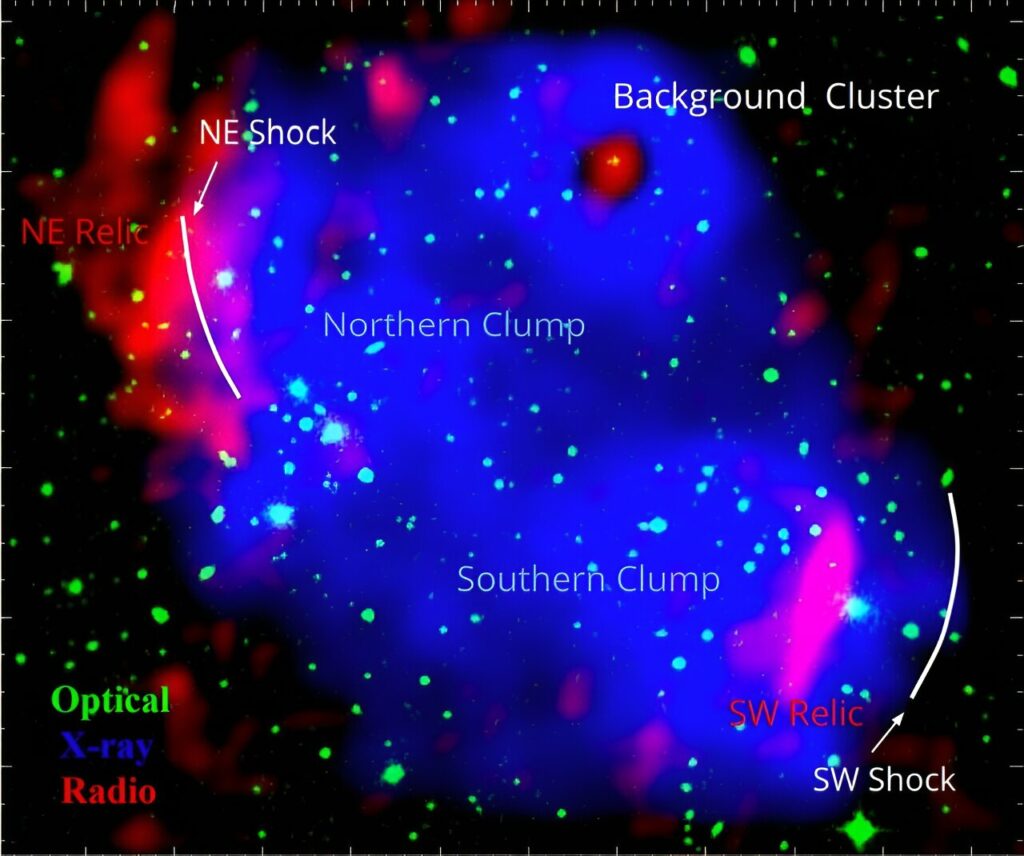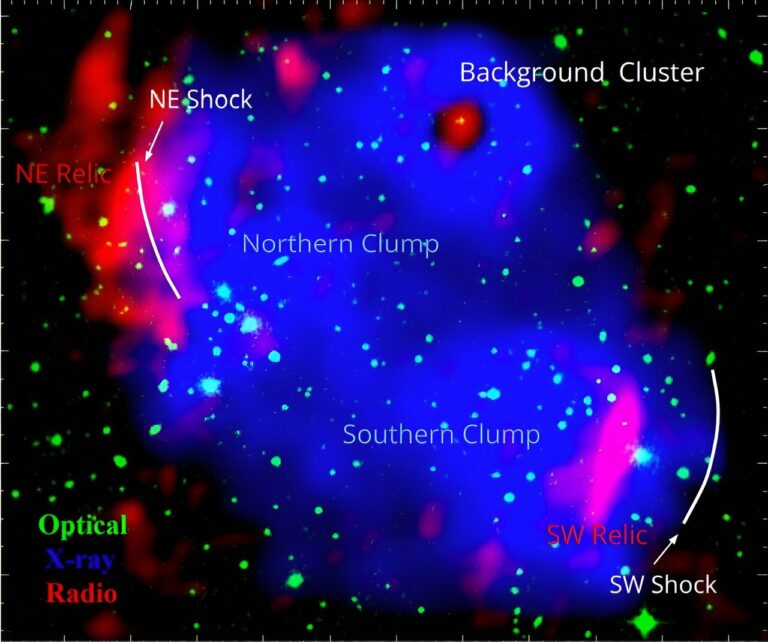Discovery of a Second Radio Relic within the Galaxy Cluster Abell 2108
Utilizing the enhanced capabilities of the Upgraded Giant Metrewave Radio Telescope (uGMRT), astronomers hailing from India and Taiwan conducted radio observations of the galaxy cluster designated Abell 2108. This effort led to the identification of a second, notably larger radio relic exhibiting distinct morphological characteristics when compared to the previously recognized relic within this cluster. The details of this discovery were presented in a paper published on December 7 on the pre-print server arXiv.

Radio relics, characterized by diffuse, elongated radio sources of synchrotron origin, often manifest as striking single or double symmetric arcs along the peripheries of galaxy clusters. The investigation of double relics is of particular interest to astronomers, as such features offer crucial insights into cluster mergers and the resulting emissions.
Abell 2108 (A2108), positioned at a redshift of 0.09 with an estimated mass of approximately 301 trillion solar masses, is a galaxy cluster. Previous observations revealed the presence of a radio relic in the southwestern region of A2108, measuring around 980,000 by 390,000 light years.
In a recent development, a team led by Swarna Chatterjee from the Indian Institute of Technology Indore, India, reported the discovery of an additional radio relic in A2108. This finding positions A2108 among the rare low-mass galaxy clusters featuring double radio relics.
The researchers detailed their findings, stating, “In this paper, we report the discovery of a new relic in the northeast of low-mass galaxy cluster A2108 and confirm the presence of the other relic in the southwest with higher significance using uGMRT band-3.”
Initially, Chatterjee’s team identified a distinct diffuse emission feature in the northeastern periphery of A2108. The brightest segment of this feature was located approximately 1.4 million light years away from the X-ray center of the cluster. The emission’s location and morphology strongly indicate its classification as a radio relic.
The newly discovered northeastern relic exhibits a patchy structure, differing morphologically from the known relic, and is notably larger, spanning an area of two by one million years. With an integrated flux density of 24.8 mJy, the northeastern relic’s radio luminosity is more than two times higher than its southwestern counterpart.
Observations revealed that both radio relics in A2108 exhibit considerably low radio power at 1.4 GHz when compared to other double relic clusters. Furthermore, the surface brightness ratio between the two relics suggests a potential difference in origin.
The astronomers also identified a surface brightness jump and a tentative temperature jump within the northeastern relic, indicating the presence of a weak supersonic shock. This could explain the newfound relic’s low radio luminosity.
This article is republished from PhysORG under a Creative Commons license. Read the original article.
Do not forget to share your opinion with us to provide you with the best posts !




0 Comments